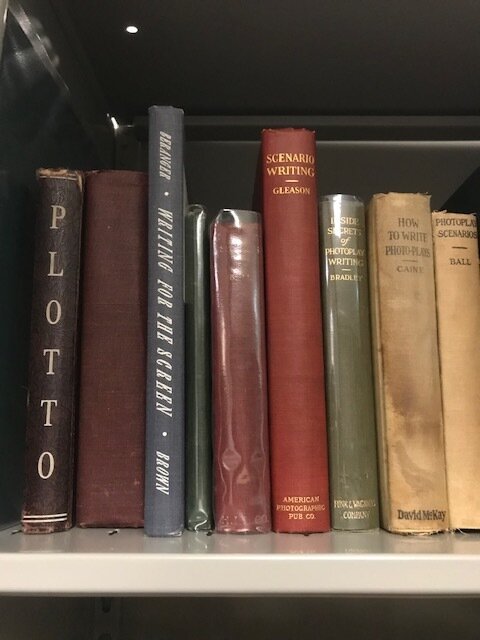Five Enterprising Plots
I’m writing this blog post for anybody who’s ever felt stuck in the brainstorming or idea development phase of the screenwriting process or for anybody who has little to no clue what they’re going to write next.
My suggestion: Why not try a random plot generator?
I know what you’re probably thinking…. “Random plot generator? Excuse me, but that sounds rather amateurish and I’m no hack!”
When I say “Random plot generator,” your mind probably pictures an internet quiz that shoots back random results to you via some algorithm… and algorithms are the opposite of feelings… and we’re supposed to write from our feelings to tell compelling stories. I know, I know.
Plot generators have actually been around since at least the late 1880s. In their nascency, “plot generators” often took the form of books that attempted to list out every conceivable type of plot in existence, leaving it up to the reader to comb through the pages to find a worthwhile scenario worth pursuing. An early example of this is Georges Polti’s Thirty-Six Dramatic Situations originally published in France in 1895.
As part of its mission to collect books on the craft of writing for the screen, the Writers Guild Foundation Library has amassed a sizable amalgamation of writing manuals from the early days of cinema and television. Included amongst these manuals is a first edition plot-generator, Plotto by William Wallace Cook. First printed in 1928, Plotto is a collection of nearly 1500 plots. Like its early predecessor “Thirty-Six Dramatic Situations,” it doesn’t purport to generate plots, so much as list lots and lots of them.
Over the years, there have been numerous attempts in the tech world to digitize Plotto and make it more of a random story generator. These attempts have yielded interesting studies in how the social and narrative landscapes have changed (mostly for the better) over the years.
In my opinion, a dated book like Plotto shouldn’t necessarily be reimagined as an internet plot generator. Rather, it should be taken at face value.
If you’re stuck in trying to come up with or build out a plot, why not look at a book like Plotto the way it was meant to be experienced? This means flipping through its 300 pages and trying to find the ideas that jump out at you. I feel it my librarian-ly obligation to encourage you to get out of your house and do a little research when you’re trying to develop a new idea. It’s a fun and unique experience to come to a place like the WGF Library and ask to see some of the older vault materials.
I read through a bit of Plotto recently and I was struck by what I found.
As I was reading, many plots became visceral in my head. I was able to see characters “A” and “B” in my mind and I assigned them different genders when I felt the book skew a little too masculine. I found that I was drawn to certain themes in the book: themes of misfortune, mistaken judgement, deliverance, idealism and simulation. Aspects of the book have not aged well, but certain themes as they pertain to human nature are evergreen.
Here are a few of the plots I was particularly struck by and some observations I had while reading. Maybe they will be of use to you in your research:
Can’t you see the oafish character at the center of this story, trying desperately to avoid embarrassment? Humans will do anything to avoid looking or feeling humiliated.
As humans, we’ll always struggle with our prejudices and judgements. When a character turns out to be different than we expect, I think this will always elicit an emotional response in us.
When you think about it, the point of every story is deliverance – to free ourselves, to free others from from imprisonment literal or spiritual.
Stories help us to develop our personal and collective ideals. As a writer, you can work out what’s important to you by telling a story… and maybe – just maybe – your story will help others decide what’s important to them too.
Disguises and armor are a few ways that people protect themselves from being hurt, and part of life is trying to get past each others’ walls to understand and to connect.
I’m putting this blog post out there because I want to remind folks that you don’t always have to gravitate towards the newest, hottest writing manuals to get inspired. Sometimes if you forage a little bit in the archives, you can find a different kind of inspiration. You can observe first-hand what ideas haven’t aged well and, conversely, what ideas haven’t aged at all.
I know if you look at a book like Plotto, your observations and takeaways might be entirely different from mine…
… But I wanted to let you know that it and other books are here for anytime you might be feeling a little stuck.
As always, to search our librarian catalog and archival holdings, click it here.







